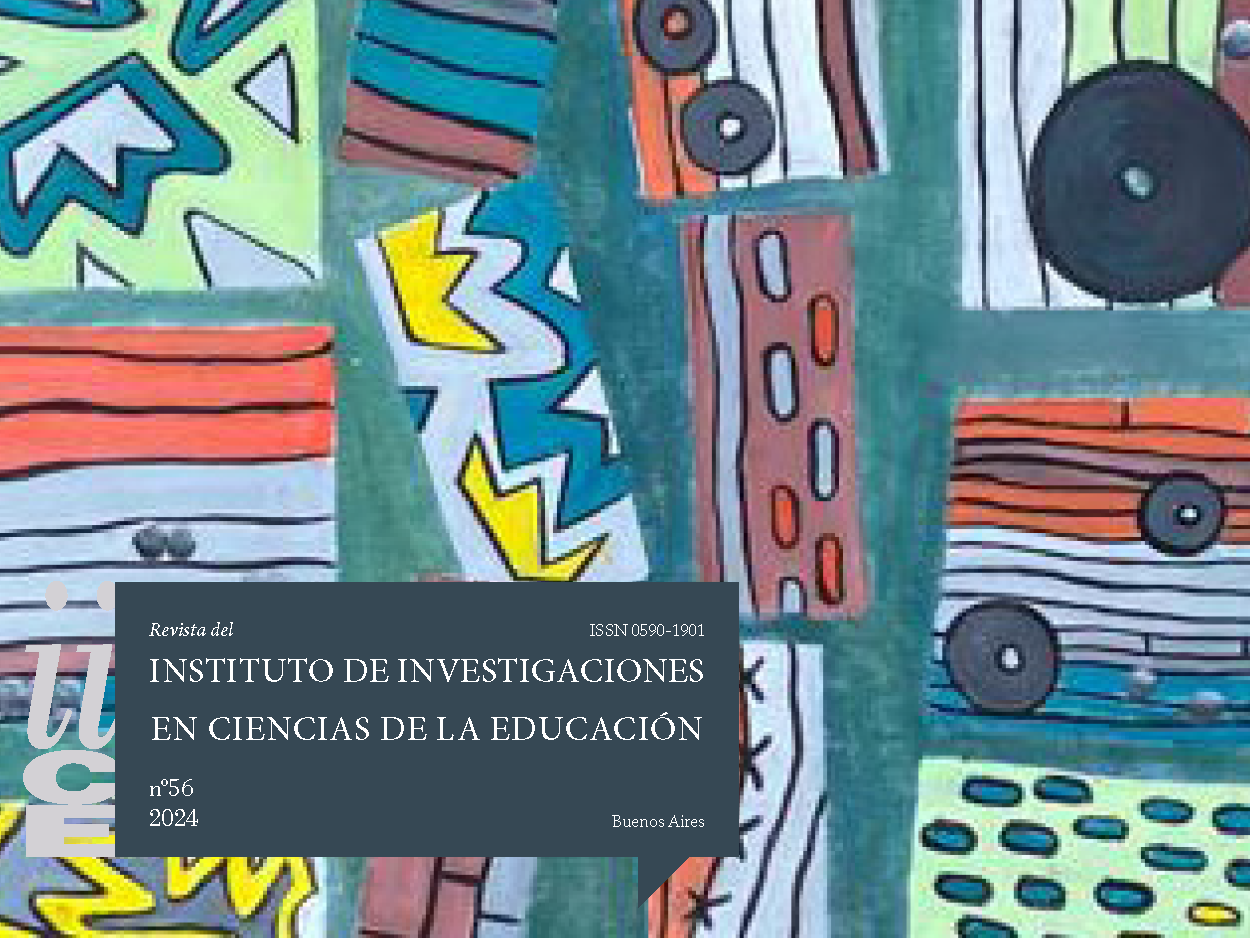Immersive Digital Pieces for Higher Education
Design and production from the Center of Innovation in Technology and Pedagogy at UBA
Abstract
This study examines the design, development and implementation of immersive digital pieces for higher education teaching within the framework of Study Citep at University of Buenos Aires. The research explores how immersive technologies (virtual reality, augmented reality, 360° videos, and 3D models) can transform traditional educational practices and enhance teaching and learning processes. Using a case study methodology, the research analyses the iterative and interdisciplinary production process identifying five pedagogical foundations: access to professional environments, experiencing real situations, making disciplinary decisions, understanding complex phenomena and contextualizing knowledge. The study reveals how these technologies create learning experiences by providing access to relevant but often inaccessible scenarios in reality. The results highlight the importance of a design that integrates aspects such as appropriate technological selection, recreation of relevant scenarios, levels of interactivity, and narrative and playful components. Although focused on microbiology, chemistry, topography, safety and hygiene, public health, agricultural bases for animal production and anaesthesiology, the study raises questions about its development in the social sciences and humanities. Significant challenges are identified, including the complexity of interdisciplinary development, the balance between realism and pedagogical objectives, and issues of scalability and institutional implementation.Downloads
References
Alaker, M.; Wynn, G. R. y Arulampalam, T. (2016). Virtual reality training in laparoscopic surgery: A systematic review & meta-analysis. International journal of surgery, 29: 85-94. doi: 10.1016/j.ijsu.2016.03.034
Bain, K. (2023). Superasignaturas: El futuro de la enseñanza y del aprendizaje. Valencia: Universitat de Valencia.
Berns, A.; Mota, J. M.; Ruiz-Rube, I. y Dodero, J. M. (2018). Exploring the potential of a 360° video application for foreign language learning. En García Peñalvo, F. J. (ed.). TEEM'18: Proceedings of the Sixth International Conference on Technological Ecosystems for Enhancing Multiculturality, pp. 776-780. Nueva York: Association for Computing Machinery. doi: 10.1145/3284179.3284309
Brown, T. (2009). Change by Design: How Design Thinking Transforms Organizations and Inspires Innovation. Nueva York: HarperBusiness.
Bujić, M.; Salminen, M. y Hamari, J. (2023). Effects of Immersive Media on Emotion and Memory: An Experiment Comparing Article, 360-video, and Virtual Reality. International Journal of Human-Computer Studies, 179, Artículo 103118. doi: 10.1016/j.ijhcs.2023.103118
Dede, C. J. (2009). Immersive interfaces for Engagement and Learning. Science, 323(5910): 66-69. doi: 10.1126/science.1167311
Dede, C. J.; Jacobson, J. y Richards, J. (2017). Introduction: Virtual, Augmented, and Mixed Realities in Education. En Liu, D.; Dede, C.; Huang, R. y Richards, J. (eds.). Virtual, Augmented, and Mixed Realities in Education, pp. 1-16. Singapur: Springer. doi: 10.1007/978-981-10-5490-7_1
Feurstein, M. S. (2018). Towards an Integration of 360-DegreeVideo in Higher Education. En Schiffner, D. (ed.). Proceedings of DeLFI Workshops 2018 co-located with 16th e-Learning Conference of the German Computer Society (DeLFI 2018), pp. 1-12. Frankfurt: CEUR Workshop Proceedings. Recuperado de: https://research.wu.ac.at/en/publications/towards-an-integration-of-360-degree-video-in-higher-education-5
Fokides, E.; Atsikpasi, P. y Arvaniti, P. A. (2021). Lessons learned from a project examining the learning outcomes and experiences in 360° videos. Journal of Educational Studies and Multidisciplinary Approaches (JESMA), 1(1): 51-70. doi: 10.51383/jesma.2021.8
Freina, L. y Ott, M. (2015). A Literature Review on Immersive Virtual Reality in Education: State Of The Art and Perspectives. En Roceanu, I.; Moldoveanu, F.; Trausan-Matu, S.; Barbieru, D.; Beligan, D. y A. Ionita (eds.). Rethinking education by leveraging the eLearning pillar of the Digital Agenda for Europe, vol. 1. Proceedings of the 11th International Scientific Conference “eLearning and Software for Education“. Bucarest, 23-24/04, pp. 133-141. Bucarest: Carol I National Defence University Publishing House. doi: 10.12753/2066-026X-15-020
Lave, J. y Wenger, E. (1991). Situated Learning: Legitimate Peripheral Participation. Cambridge, UK: Cambridge University Press.
Maggio, M. (2018). Reinventar la clase en la universidad. Buenos Aires: Paidós.
Milgram, P.; Takemura, H.; Utsumi, A.; Kishino; F. (2018). Augmented Reality: A class of displays on the reality-virtuality continuum. En Proc. SPIE (2351). Telemanipulator and Telepresence Technologies, 1994. En Feurstein, M. S. Towards an Integration of 360-Degree Video in Higher Education. En Schiffner, D. (ed.). Proceedings of DeLFI Workshops 2018 co-located with 16th e-Learning Conference oft he German Computer Society (DeLFI 2018), pp. 1-12. CEUR Workshop Proceedings. Disponible en https://ceur-ws.org/Vol-2250/WS_VRAR_paper3.pdf
Morie, J. F. (2020). The Promises and Challenges of Immersive Education. En Morie, J. F. y McCallum, K. (eds.). Handbook of Research on the Global Impacts and Roles of Immersive Media, pp. 348-370. IGI Global. doi: 10.4018/978-1-7998-2433-6.ch017
Murray, J. H. (2017). Hamlet on the Holodeck: The Future of Narrative in Cyberspace (ed. adaptada). Cambridge, Massachusetts: The MIT press.
Pinto, L. (2014). Centros Universitarios de innovación: el caso CITEP. En Lipsman, M.; Mansur, A.; Roig, H.; Lion, C. y Maggio, M. (coords.). Homenaje a Edith Litwin, pp. 24-46. Buenos Aires: Eudeba.
Ranieri, M.; Luzzi, D.; Cuomo, S. y Bruni, I. (2022). If and how do 360° videos fit into education settings? Results from a scoping review of empirical research. Journal of Computer Assisted Learning, 38(5): 1199-1219. doi: 10.1111/jcal.12683
Rose, F. (2012). The Art of Immersion: How the Digital Generation Is Remaking Hollywood, Madison Avenue, and the Way We Tell Stories. Nueva York: W. W. Norton & Company.
Ryan, M.-L. (2015). Narrative as Virtual Reality 2: Revisiting Immersion and Interactivity in Literature and Electronic Media. Baltimore, Maryland: Johns Hopkins University Press. Recuperado de: https://www.scribd.com/document/381851001/Narrative-as-Virtual-Reality-2-Marie-Laure-Ryan
Snyder, M.; Kramer, S.; Lippe, D. y Sankar, S. (2023). Design and Implementation of 360-Degree Video Vignettes in Immersive Virtual Reality: A Quality Management in Higher Education Case. The Qualitative Report, 28(7): 2113-2155. doi: 10.46743/2160-3715/2023.6140
Stake, R. E. (1999). Investigación con estudio de casos, 2ª ed. Madrid: Morata. Disponible en https://www.uv.mx/rmipe/files/2017/02/Investigacion-con-estudios-de-caso.pdf











